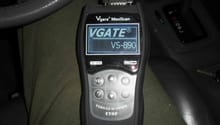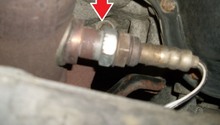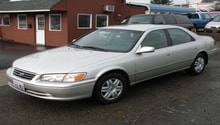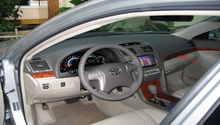Toyota Camry 2002-2006: Why is My Check Engine Light On?
If your Check Engine Light (CEL) is on, this article will help you determine why and how to repair. Here you will learn the most common issues that will cause the CEL to turn on.
This article applies to the 5th generation Toyota Camry (2002-2006).
Are you seeing the Check Engine Light (CEL) flashing on your fifth generation Toyota Camry? A flashing CEL is usually indicative of misfires. It might be coming from something simple like bad gasoline, or from something more complicated tied to the emission's sensors. Here are a few steps to take to find out what the warning light means and what DIY repairs might need to be done on the 2002 to 2006 model year Camry.
Step 1 – Gas cap, gas quality and oil level
It could be as simple as screwing the lid on tightly.
It’s good to start with simple and common problems that can set off the CEL. The gas cap may be loose and needs to be secured, which will shut off the CEL. If it’s coming from poor quality gasoline, you can use up the gas, refill the tank, then clear the codes to see if they return. If codes don’t return, it came from bad gas.
Check your oil to see if it’s at the right level, and make sure there are no oil leaks. High levels of oil consumption, burning, or leaking is the result of a problem. If your vehicle is burning through more than one quart of oil per 1,000 miles, you have engine-related issues to sort out. Low oil levels can cause a cylinder misfire.

Pro Tip
Don't drive the car if the CEL is flashing. The flashing light indicates a severe misfire that could damage the engine, catalytic converter, and many other expensive things, and be part of a much bigger problem. If the CEL is steady and consistently on, the car should be OK to drive for now.
If the gas cap was on tightly and the correct octane gas is in the vehicle, then proceed to Step 2.
Step 2 – Catalytic converters
If one of your CATs has gone out, it will cause the CEL to activate.
If your CEL comes on but your car is running fine, you might want to check out the catalyst efficiency of the catalytic converters. This will play a part in having SMOG/emissions checks done on your car.
Two OBD codes might be presented in the warning – P0430 Catalyst Efficiency Below Normal (Bank 2) and P0420 Catalyst Efficiency Below Normal (Bank 1). If only one code has been reported, it typically means that it’s one failed converter. If two converters fail at the same time, you might look for a common issue causing these codes rather than assuming both converters have failed together. Replacing the converters can be very costly, so you’ll want to check out other possible causes first.
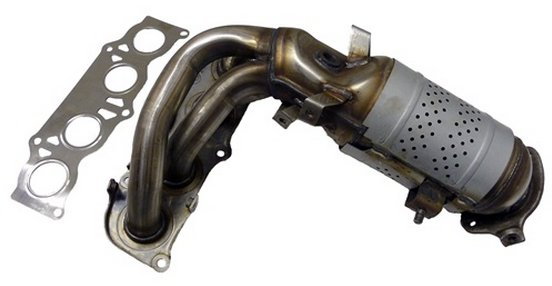
One typical problem to look for is a leak in the exhaust manifold or exhaust system before the converters. There are no codes for these exhaust leaks; extra air in the exhaust can cause the sensor signals to be different than the norm. (It could also be a failed O2 sensor–more on that later.)
You may have a failed coolant temperature sensor for the engine’s computer, which means it would need to be replaced. It could also be coming from a fluke in the system and not a specific failure, which means you can clear the codes and wait to see if they reappear. You’ll need to make sure the system is working to pass your next SMOG check.
Pro Tip
A Toyota dealer or someone else with an ODB-II scan tool can view real time data of the sensors as the engine is running and compare it to Toyota data available in the service manual. If all the sensors check out fine along with finding no exhaust leaks, this would add more evidence it was both converters. You can get the code(s) read and post back. You can get the code(s) read for free at most auto parts stores.
If there is no leak coming from the exhaust manifold or the exhaust system, then continue to Step 3.
Step 3 – Check O2 sensor
A bad or faulty 02 sensor can mean dash light trouble.
One typical reason for the failure codes to appear is a spotty or "lazy" oxygen (O2) sensor (or A/F ratio sensor). That sensor should generate its own code, but that’s not 100% certain. A repair shop may tell you the code is P0420, which could mean a new front catalytic converter and O2 sensor. You should clear the code and see if it comes back.
Mechanics may suggest replacing the O2 sensors. The fifth generation Camry is probably not old enough to have wiring problems due to corrosion or degradation, so O2 sensors should be replaced.

Pro Tip
For checking out the 02 sensor and other devices, you may want buy your own OBD-II scanner to diagnose your own codes. There are lots of scanners to choose from, and it can really support your DIY repairs.
If the 02 sensors are okay, then soldier on with Step 4.
Step 4 – Head gasket might be blown
If your coolant meter is reaching for the sky, it could be a gasket issue.
You might have heard a pop noise in your engine and notice smoke and steam coming from under the hood. You might step on the gas pedal and only make it to 40-45 mph.
Check to see if your temperature gauge is climbing. You may have coolant running in all cylinders, which means the head gasket has been blown and the coolant is spewing into the combustion chambers. It doesn’t take much overheating to destroy the head gasket. It can also warp and crack the head cylinder if the temperature gets very high. If your car is overheating, pull over immediately and shut the vehicle off.

If the gasket heads are all okay, then move on to Step 5.
Step 5 – Check warranty coverage on emissions sensors
If the warranty is still good, then let someone else deal with it.
The federal government and some states mandate a separate warranty on certain emissions equipment, including these sensors, and you can check TSB (Technical Service Bulletin) EG034-04 to see if it applies to your car. If it does and the car is still under any extended warranty for this repair as provided by the TSB, the dealer should repair the car free of charge.
It does apply in cases of defective parts, computer re-flash, and other conditions where Toyota has extended the warranty coverage beyond the typical 36,000 miles/36 months, or beyond the U.S. Environmental Protection Agency’s 80,000 miles/80 months on emissions sensors. The EPA and a few states do mandate a separate warranty on these sensors, but it may have expired for your car. The A/F sensor is not included under the 80/80 warranty, so it won’t be covered unless it’s identified as one of the specific covered parts (such as in the catalytic converter).
If your vehicle is out of warranty or just not covered, then move to Step 6.
Step 6 – Replacing the failed sensor
Out with the old, and in with the new.
A failing sensor can cause the fuel/air ratio to run rich, which increases the potential for catalytic converter failure. If you’ve found out that the sensor is broken, it’s recommended that you buy either the Toyota brand or Denso brand sensor.
You can do the job yourself. The AutoZone website has a useful self-help repair section. You can also do a Google search on replacing the A/F sensor for the Camry's engine.

Pro Tip
If you’re using the Denso sensor, buy the sensor that’s specific to the make, model, as well as year of the car and not just a “universal” sensor.
Related Discussions
- Check Engine P0420 - CamryForums.com
- 2002 Camry CEL P0430 & P0420 Catalytic Efficiency - CamryForums.com
- 2002 Camry Check Engine Light - CamryForums.com
- Check Engine Light - CamryForums.com
- Camry Check Engine Light Flashing - CamryForums.com


